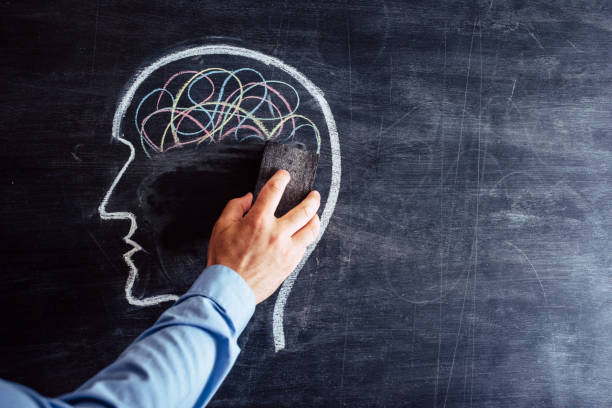Memory Markers: How They Work and Why They Matter

Memory markers are tools and techniques that enhance the encoding, storage, and retrieval of information in the brain. These markers play a crucial role in improving memory retention and recall, making them invaluable in both academic and professional settings. Understanding how memory markers work and why they matter can significantly impact learning efficiency and overall cognitive performance. This article delves into the mechanisms behind memory markers and their importance in everyday life.
How Memory Markers Work
Memory markers leverage the brain’s natural processes to make information more memorable. They often involve the use of visualization, association, repetition, and organization, which help strengthen neural connections and improve memory function.
Encoding Information
Encoding is the first step in creating a memory. It involves transforming sensory input into a form that can be stored in the brain. Memory markers enhance encoding by making information more vivid and easier to process.
Visualization
Visualization involves creating mental images to represent information. The brain has a strong ability to remember visual information, which makes visualization a powerful tool for encoding.
- Example: To remember a grocery list, visualize each item in a specific location in your home. For instance, imagine placing apples on the kitchen counter, milk in the fridge, and bread on the dining table.
Association
Association connects new information with existing knowledge, making it easier to remember. This technique leverages the brain’s natural tendency to link related concepts.
- Example: To remember the name “Baker,” you might associate it with the image of a baker wearing a chef’s hat and holding a tray of cookies.
Storing Information
Storage is the maintenance of encoded information over time. Effective storage ensures that memories remain intact and can be accessed when needed. Memory markers facilitate storage by organizing information in a structured manner.
Chunking
Chunking breaks down large pieces of information into smaller, manageable units. This reduces cognitive load and makes it easier to store information in memory.
- Example: Instead of remembering the number 149217761945 as a whole, break it into chunks: 1492, 1776, 1945. Each chunk represents a significant historical year, making it easier to recall.
Hierarchical Organization
Organizing information hierarchically helps prioritize and structure it, enhancing memory storage. This method involves creating categories and subcategories to group related information.
- Example: When studying biology, organize information by systems (e.g., circulatory system, respiratory system) and then by components within each system (e.g., heart, lungs).
Retrieving Information
Retrieval is the process of accessing stored information. Effective retrieval techniques ensure that memories can be recalled accurately and efficiently. Memory markers enhance retrieval by creating strong cues and associations.
Mnemonics
Mnemonics are memory aids that use patterns, associations, or acronyms to help recall information. They create mental shortcuts that simplify complex information.
- Example: To remember the colors of the rainbow, use the acronym “ROYGBIV” (Red, Orange, Yellow, Green, Blue, Indigo, Violet).
Spaced Repetition
Spaced repetition involves reviewing information at increasing intervals over time. This method combats the forgetting curve by reinforcing memory just before it fades.
- Example: Use flashcards to review material. Start with frequent reviews and gradually increase the intervals between sessions as you become more confident in your recall.
Why Memory Markers Matter
Memory markers are essential for effective learning and cognitive performance. They offer numerous benefits that enhance both academic and professional success.
Improved Learning Efficiency
Memory markers streamline the learning process by making information easier to encode, store, and retrieve. This efficiency allows learners to grasp new concepts quickly and retain them longer.
- Example: Students who use mind maps to organize their notes can better understand and remember complex subjects, leading to improved academic performance.
Enhanced Recall and Retention
Using memory markers increases the likelihood of recalling information accurately and quickly. This ability is crucial in situations where timely and precise recall is necessary.
- Example: Professionals who use mnemonics to remember key details of a presentation can deliver their message more effectively, enhancing their credibility and impact.
Increased Understanding and Comprehension
Memory markers help organize information in a meaningful way, facilitating deeper understanding and comprehension. This structured approach allows learners to see connections between concepts and apply their knowledge more effectively.
- Example: Creating analogies to explain scientific concepts can make them more relatable and easier to understand, helping students grasp complex ideas.
Boosted Motivation and Engagement
Engaging with material in creative and interactive ways boosts motivation and makes learning more enjoyable. Memory markers often involve techniques that are both fun and stimulating.
- Example: Using storytelling to remember historical events can make the learning experience more interesting and memorable for students.
Reduced Cognitive Load
Memory markers help manage cognitive load by organizing and simplifying information. This allows the brain to process and store information more efficiently, reducing mental strain.
- Example: Chunking information into smaller units makes it easier to remember large amounts of data, such as phone numbers or sequences.
Long-Term Cognitive Benefits
The use of memory markers not only improves immediate learning outcomes but also offers long-term cognitive benefits. Techniques that enhance memory can lead to better overall cognitive function, including improved problem-solving skills and increased mental agility.
- Example: Practicing spaced repetition can enhance long-term memory, making it easier to retain and recall information over extended periods.
Lifelong Learning
Memory markers equip learners with tools that can be applied throughout their lives, supporting continuous learning and intellectual growth. These techniques are adaptable and can be used in various contexts, from academic study to professional development.
- Example: Professionals who continue to use memory markers for ongoing education and training can stay current in their fields and advance their careers.
Conclusion
Memory markers are powerful tools that enhance the encoding, storage, and retrieval of information. By understanding how these techniques work and why they matter, learners can significantly improve their memory retention and recall. Whether in academic settings, professional environments, or everyday life, memory markers offer numerous benefits that enhance learning efficiency, recall accuracy, comprehension, motivation, and cognitive performance. By incorporating visualization, association, repetition, and organization into their study habits, individuals can unlock their full cognitive potential and achieve greater success in all areas of life.
click here to visit website





